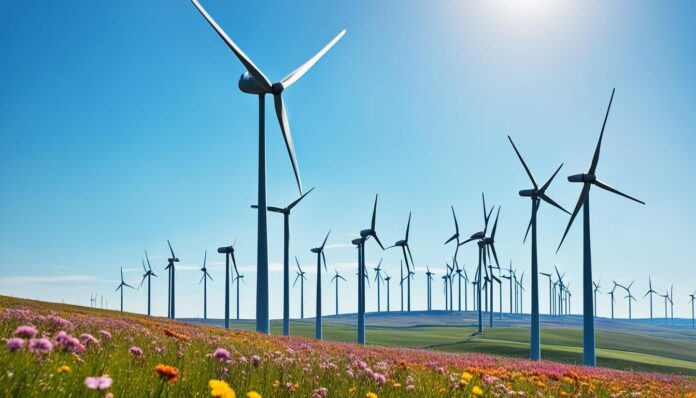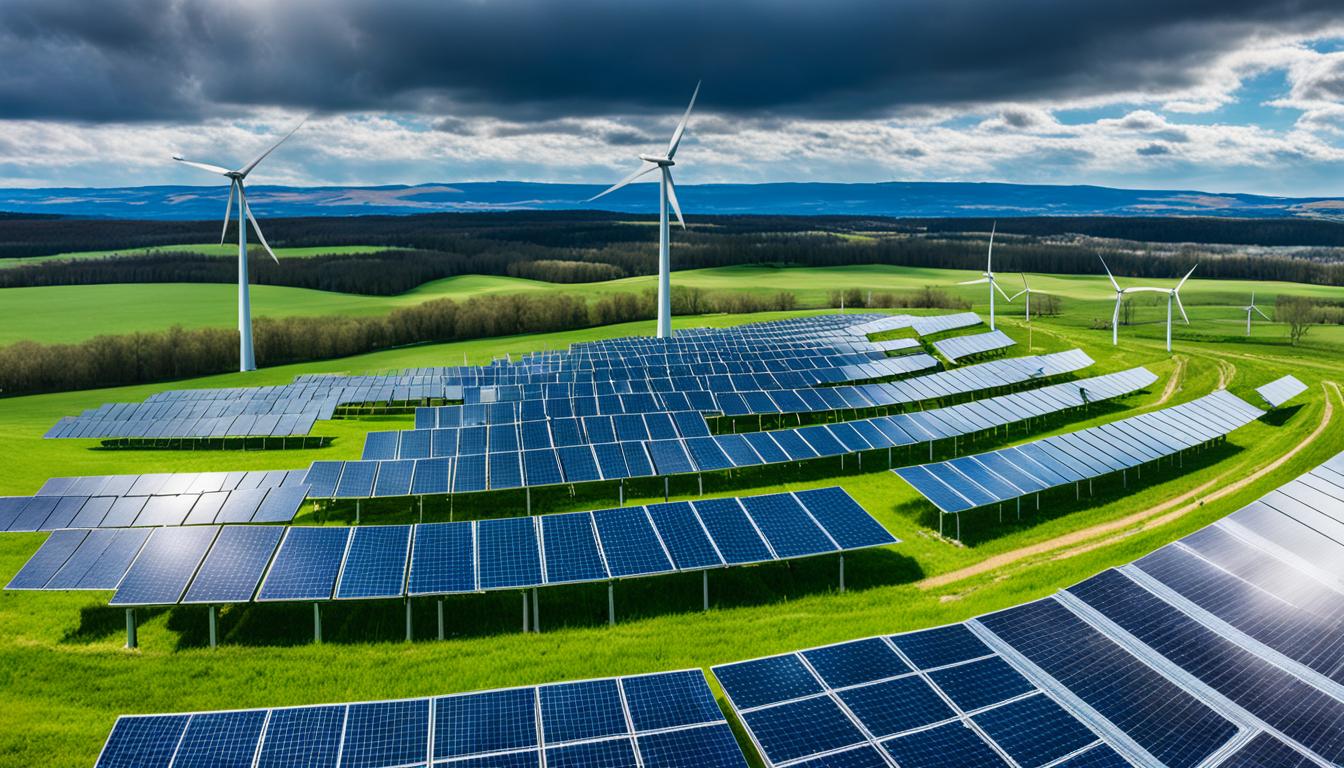
The future of renewable energy infrastructure is looking brighter than ever, according to the latest report from the International Energy Agency (IEA). Global electricity demand is set to grow over the next three years, but this additional power use will be covered by low-emissions sources. The IEA forecasts that renewable energy is poised to overtake the world’s use of coal by early 2025 and will account for more than one-third of the world’s total electricity generation. At the same time, nuclear power generation is projected to reach record highs by 2025, rebounding from recent declines. By 2026, renewables and nuclear are expected to account for almost half of the world’s power generation, up from less than 40% in 2023. This transition to clean energy is crucial to limiting global warming to 1.5 degrees Celsius or as close to that as possible.
Key Takeaways
- Renewable energy is set to overtake coal as the world’s top source of electricity by early 2025.
- Solar and wind power are leading the charge in the renewable energy transition.
- Nuclear power generation is expected to reach historic highs by 2025.
- Renewable energy and nuclear power are projected to account for almost half of the world’s power generation by 2026.
- The transition to clean energy is crucial to limiting global warming to 1.5 degrees Celsius.
Renewable Energy to Overtake Coal by 2025
According to the latest report from the International Energy Agency (IEA), the rapid growth of renewable energy, led by ever-cheaper solar energy, and the steady expansion of nuclear power are on course to match all the increase in global electricity demand over the next three years. This is a significant milestone, as renewables are set to overtake the world’s use of coal by early 2025 and account for more than one-third of the world’s total electricity generation.
Solar and Wind Power Leading the Charge
Solar and wind power are leading the charge, with wind and solar PV power generation forecast to exceed nuclear power generation in 2025 and 2026, respectively. This rapid growth in renewable energy sources is crucial in the global effort to transition away from fossil fuels and limit climate change.
Nuclear Power Rebounds
Alongside the surge in renewable energy, the IEA report also highlights that nuclear power generation is set to reach a historic high by 2025, rebounding from recent declines. This diversification of the energy mix is essential for ensuring the stability and reliability of the power grid as the world moves towards a more sustainable energy future.

The latest developments in renewable energy infrastructure expected by 2025?
According to the U.S. Energy Information Administration (EIA), solar energy is expected to be the leading source of growth in the U.S. power sector through the end of 2025, with 79 GW of new solar capacity projected to come online over the next two years. The EIA forecasts that the solar share of total generation will increase to 6% in 2024 and 7% in 2025, up from 4% in 2023. This rapid growth in solar photovoltaic (PV) energy is driven by significant anticipated capacity increases, with 36 GW of new solar capacity expected this year and 43 GW in 2025.
Expansion of Wind Power
Meanwhile, the International Energy Agency (IEA) predicts that wind power generation will also expand, though project development has been slower than initially expected in Europe and North America. To address this, the EU has announced its Wind Power Action Plan with measures to improve permitting, auction processes, and financing access, as well as expand workforce training. The deployment of floating wind farms with a capacity of 15 GW is also expected by 2035 in the U.S.
Conclusion
The latest developments in renewable energy infrastructure expected by 2025 paint a promising picture for the future of clean energy. Renewable energy is set to overtake coal as the world’s top source of electricity by early 2025, with solar and wind power leading the charge. Solar PV energy is projected to see rapid growth, with 79 GW of new capacity expected in the U.S. over the next two years.
Wind power is also expanding, though facing some challenges in certain regions, prompting policy measures to support its growth. Nuclear power is also rebounding, set to reach historic highs by 2025. Beyond these technologies, advancements in energy storage systems, smart grids, and the production of green hydrogen will be crucial to ensuring the stability and resilience of the power grid as renewable energy sources become more dominant.
Overall, the transition to a sustainable energy future is well underway, with the latest developments in renewable energy infrastructure expected to play a pivotal role in the years ahead. As the U.S. continues to prioritize clean energy solutions, you can look forward to a future powered by an increasingly diverse and robust renewable energy landscape.
FAQ
What are the latest developments in renewable energy infrastructure expected by 2025?
According to the latest reports, renewable energy is set to overtake the world’s use of coal by early 2025 and will account for more than one-third of the world’s total electricity generation. Solar and wind power are leading the charge, with wind and solar PV power generation forecast to exceed nuclear power generation in 2025 and 2026, respectively. Additionally, nuclear power generation is set to reach a historic high by 2025, rebounding from recent declines.
How is solar energy expected to grow in the U.S. power sector through 2025?
The U.S. Energy Information Administration (EIA) forecasts that solar energy will be the leading source of growth in the U.S. power sector through the end of 2025, with 79 GW of new solar capacity projected to come online over the next two years. The EIA predicts that the solar share of total generation will increase to 6% in 2024 and 7% in 2025, up from 4% in 2023.
What about the expansion of wind power?
The International Energy Agency (IEA) predicts that wind power generation will also expand, though project development has been slower than initially expected in Europe and North America. To address this, the EU has announced its Wind Power Action Plan with measures to improve permitting, auction processes, and financing access, as well as expand workforce training. The deployment of floating wind farms with a capacity of 15 GW is also expected by 2035 in the U.S.
What other developments in renewable energy infrastructure are expected by 2025?
Beyond solar and wind, advancements in energy storage systems, smart grids, and the production of green hydrogen will be crucial to ensuring the stability and resilience of the power grid as renewable energy sources become more dominant.
